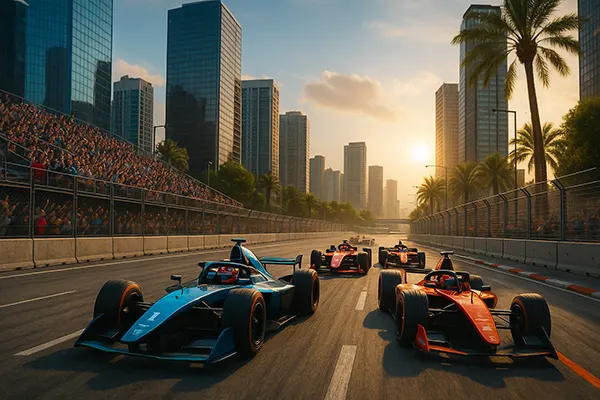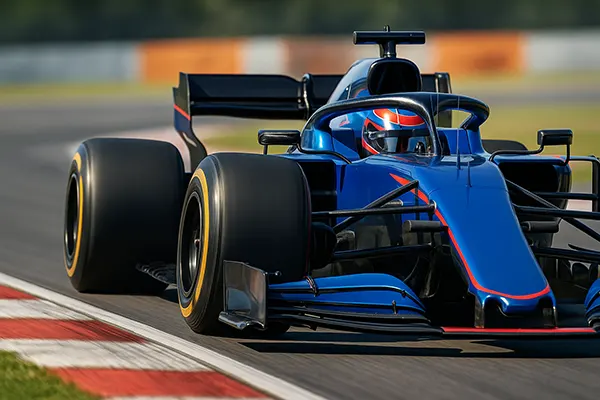Similar articles
Street Racing: How Urban Circuits Are Transforming the Format and Fan Experience

Street racing has evolved from an occasional spectacle into one of the most dynamic formats in modern motorsport. With events held in city centres from Monaco to Singapore and Las Vegas, organisers have discovered that bringing racing closer to everyday life reshapes not only logistics but also the emotional connection between fans and drivers. Urban circuits are now a stage where speed meets architecture, technology, and culture.
The Rise of Urban Racing as a Global Phenomenon
Over the past decade, major motorsport series such as Formula 1, Formula E, and IndyCar have expanded their calendars with city-based races. These locations provide a unique combination of spectacle and accessibility: fans can watch their heroes from balconies, rooftops, and temporary grandstands built against the backdrop of skyscrapers. The move towards urban settings also reduces the travel barrier for spectators, making races more inclusive and integrated into urban life.
Formula E was among the first to pioneer this concept consistently, hosting races in cities like Rome, Berlin, and London. By racing on existing streets, the championship promotes sustainability and highlights how electric vehicles can thrive in an urban environment. In parallel, Formula 1’s new street events in Miami, Jeddah, and Las Vegas prove that temporary circuits can reach global audiences without compromising performance or safety standards.
Furthermore, municipalities see these events as opportunities to revitalise tourism and improve infrastructure. Governments invest in roads, lighting, and safety barriers that remain beneficial long after the race weekend. This synergy between sport and urban development creates a new type of motorsport economy.
Technical Challenges and Innovations on Street Tracks
Racing through tight city streets requires a different approach compared to traditional circuits. Narrow corners, uneven surfaces, and variable grip levels test both the engineering and mental precision of drivers. Teams must adjust suspension geometry, cooling systems, and braking strategies to cope with limited airflow and unpredictable asphalt temperatures.
Modern telemetry and simulation tools play a crucial role. Before a single lap is completed, engineers run digital models to predict how cars will perform on bumpy, low-speed sections typical of urban layouts. These simulations allow teams to identify ideal gear ratios, fuel loads, and aerodynamic settings long before race day, reducing risks while maximising competitiveness.
Safety is another cornerstone of urban racing innovation. Temporary barriers, energy-absorbing walls, and advanced monitoring systems ensure that city events meet the same safety benchmarks as permanent tracks. The FIA’s investment in circuit design technology has made it possible to stage races in places once considered unsuitable for motorsport.
How City Circuits Redefine the Fan Experience
Street races are transforming how fans interact with motorsport. Unlike traditional circuits located far from city centres, urban races turn an entire district into a celebration of speed. Pop-up fan zones, live concerts, and interactive exhibitions blur the line between sport and entertainment, offering an immersive cultural experience for all ages.
Digital innovation further enhances engagement. With augmented reality apps, fans can access live telemetry, on-board cameras, and driver statistics in real time. Smart wristbands and mobile passes also improve event logistics, allowing seamless entry, cashless payments, and access to exclusive zones. For younger audiences accustomed to hybrid sports and esports, this digital layer creates a bridge between real and virtual racing.
Local communities also play an important role. Pop-up markets, art installations, and sustainability workshops often accompany the racing weekend, showcasing how motorsport can coexist with urban identity and promote environmental awareness. This makes the event not only a competition but a citywide celebration of innovation.
Economic and Environmental Balance
Despite the glamour, urban racing raises challenges around sustainability and urban management. Hosting large-scale events in city centres demands significant resources for logistics, security, and clean-up. To address this, organisers are adopting renewable energy sources, recyclable materials, and noise-control technologies that reduce the ecological footprint of temporary tracks.
Formula E continues to lead this transition by maintaining carbon-neutral operations and reusing street infrastructure season after season. Its partnerships with local transport authorities encourage the use of public transit, while solar-powered energy stations support teams during race weekends. These initiatives demonstrate that high-performance motorsport and environmental responsibility can coexist effectively.
Economic data from 2024 and early 2025 indicate that well-managed city races generate hundreds of millions in revenue through tourism, hospitality, and global broadcasting rights. This balance between economic gain and environmental care sets the standard for future motorsport development across continents.

The Future of Urban Motorsport
As technology and sustainability continue to shape the automotive world, city circuits are expected to become even more sophisticated. Artificial intelligence, advanced traffic modelling, and real-time crowd management will enhance safety and fan convenience. In some cities, autonomous vehicle demonstrations are already being integrated into racing weekends to showcase future mobility concepts.
Electric and hybrid propulsion will remain at the centre of this evolution. Manufacturers use these events as live laboratories to test battery technology, regenerative braking, and energy management systems that later influence consumer vehicles. This direct link between competition and innovation strengthens the relevance of urban racing in the broader context of global transport.
Ultimately, the city race format symbolises the union of tradition and progress. By merging the thrill of motorsport with the rhythm of urban life, it offers a vision of racing that is inclusive, sustainable, and technologically advanced—a format perfectly aligned with the expectations of the 2025 audience.
Social and Cultural Impact
Urban races are more than sports events; they are cultural milestones. Hosting a race in the heart of a city creates pride among residents, inspires young engineers, and reinforces community identity. It also gives local artists, entrepreneurs, and small businesses a platform to reach an international audience.
The growing diversity among fans and participants reflects a positive shift in motorsport culture. Programmes encouraging female engineers, sustainable designers, and local talent have become integral parts of urban racing projects. These initiatives ensure that the evolution of motorsport mirrors broader social progress.
Looking ahead, collaborations between cities, racing organisations, and technology firms will define how future street races operate. They will combine the excitement of competition with civic engagement, education, and innovation—ensuring that the sound of engines continues to resonate not only through the streets but also through the values of modern society.


